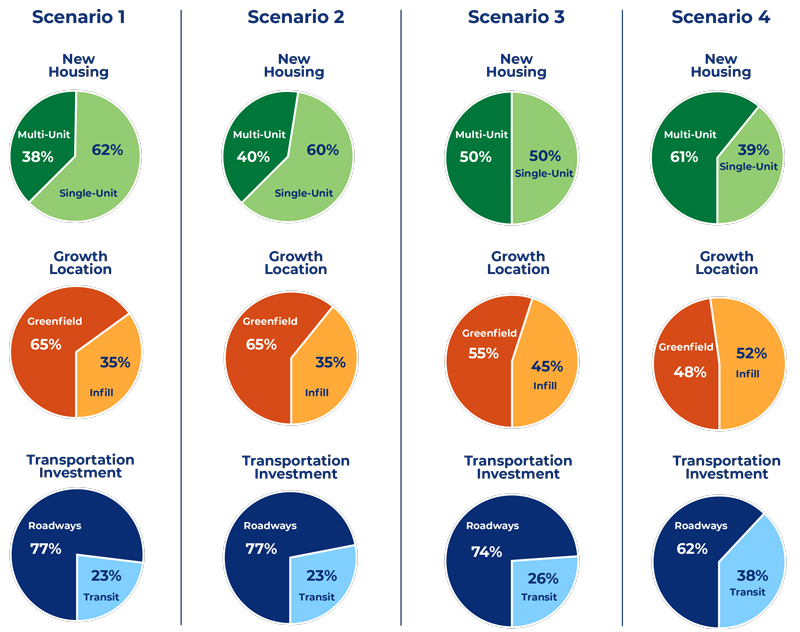Selected Best Practices
Complete Streets
Complete Streets are designed to facilitate safe access for pedestrians, bicyclists, motorists and transit riders of all ages and abilities. They make it easy to cross streets, walk to retail areas and travel to work. They also allow buses to run on schedule and make it safe for people to travel to and from train stations.
Learn more about PlanRVA's regional Complete Streets efforts.
When creating Complete Streets, transportation planners and engineers must design and operate the entire right of way to enable safe access for all users, regardless of age, ability or mode of transportation. Complete Streets make the transportation network safer for drivers, transit users, pedestrians and bicyclists.
Learn more: Smart Growth America's Introduction to Complete Streets

Performance-Based Planning and Programming
Performance management is a strategic approach that uses data to determine decision-making and outcomes. The U.S. Department of Transportation establishes a set of performance measures to increase accountability and transparency of federal highway and transit programs and improve project decision-making using performance-based planning and programming in the rulemaking process.
Once national performance measures are established, the Virginia Department of Transportation (VDOT) and providers of public transportation:
- establish performance targets that reflect the measures,
- report on progress toward achieving those targets,
- develop performance-based plans for safety and asset management, and
- implement a performance based approach to planning and programming.
Learn more: Federal Transit Administration - Performance Based Planning and Programming

Scenario Planning
Scenario planning is an analytical tool that can help transportation professionals prepare for what lies ahead. Scenario planning provides a framework for developing a shared vision for the future by analyzing various forces (e.g., health, transportation, economic, environmental, land use, etc.) that affect growth.
Scenario planning, which can be done at the statewide level or for metropolitan regions, tests various future alternatives that meet state and community needs. A defining characteristic of successful public sector scenario planning is that it actively involves the public, the business community, and elected officials on a broad scale, educating them about growth trends and trade-offs, and incorporating their values and feedback into future plans.
The scenario planning process evaluates the effects of alternative policies, plans, and/or programs on the future of a community or region. This activity can provide information to decision-makers as they develop transportation plans. Scenarios may be used by stakeholders to explore and debate alternatives and trade-offs. By testing several scenarios against performance indicators, decision-makers can select a preferred scenario and identify an appropriate set of actions that will lead toward that vision.
Learn more:


